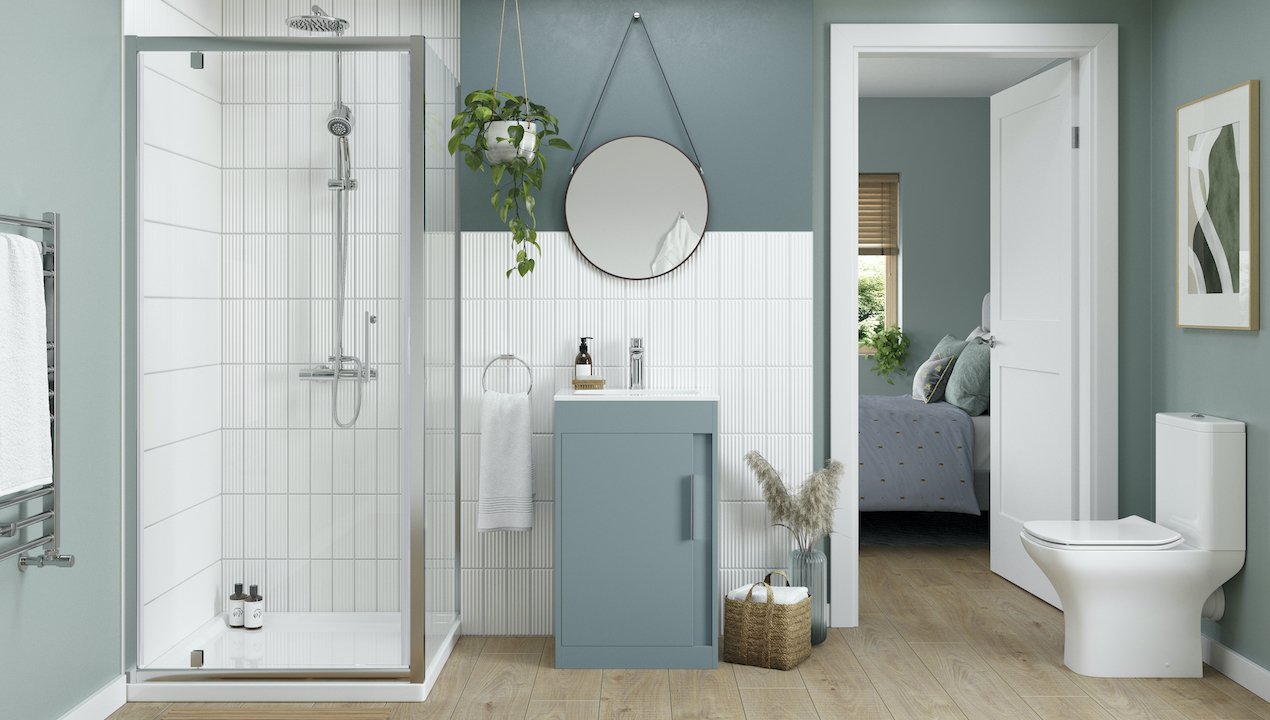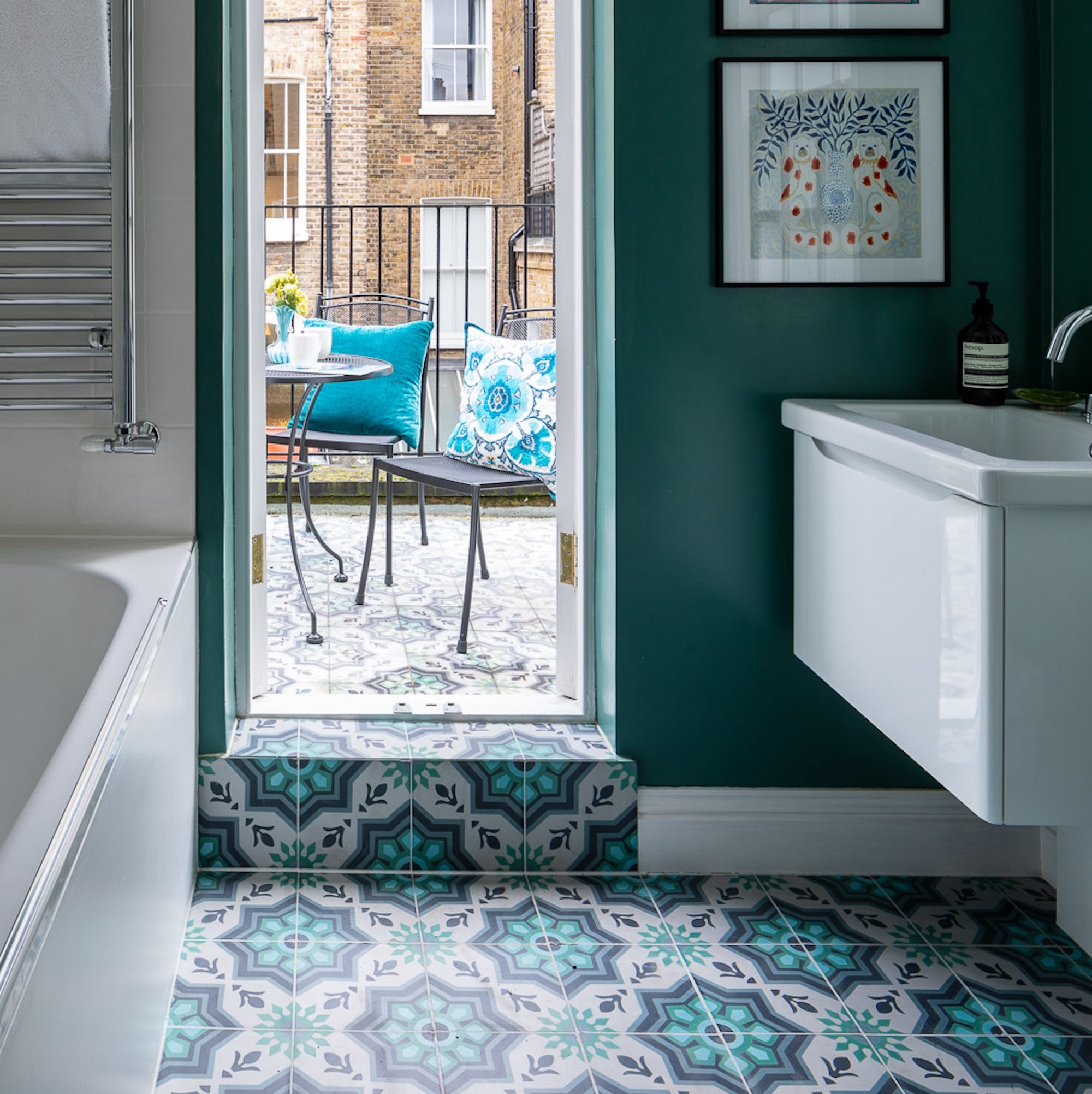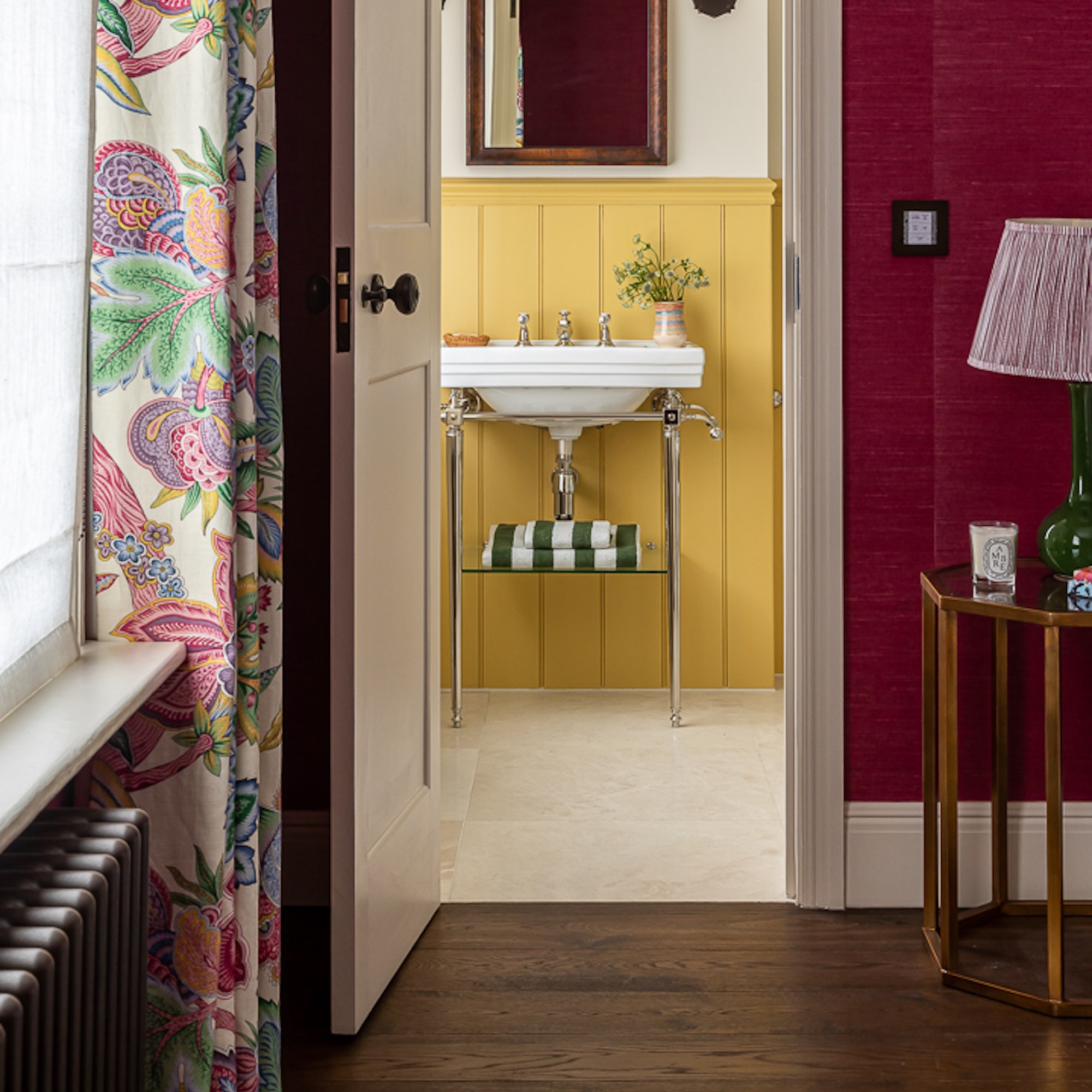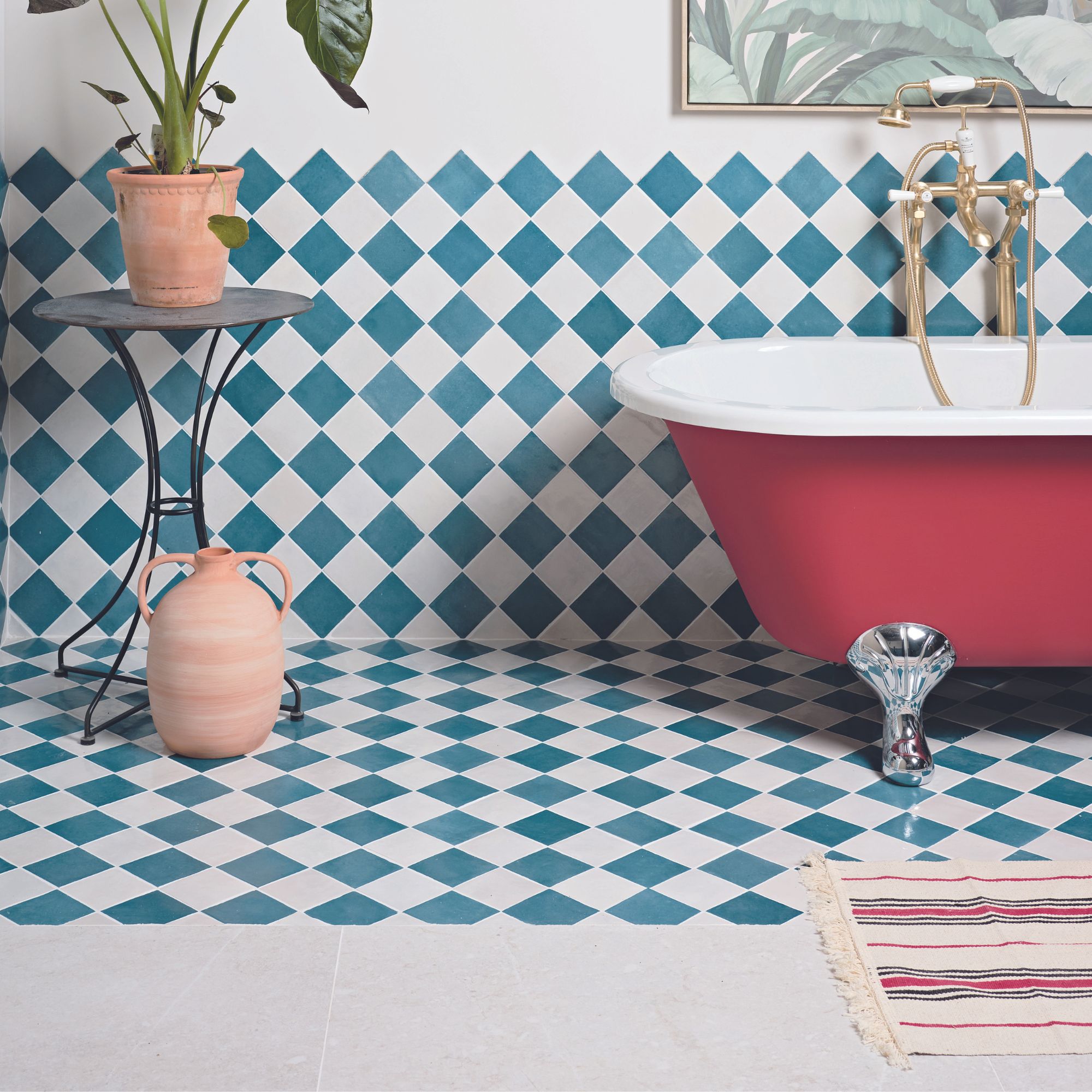
When it comes to decorating a home, continuity and cohesion are crucial to creating a harmonious and welcoming environment. Whether or not bathroom flooring should match the rest of the house is a common question that often leaves homeowners stumped, not least because the answer isn’t clear cut.
The decision of whether or not to go full matchy-matchy with your bathroom flooring ideas hinges on various factors, including style preferences, practical requirements, and the overall design vision.
‘The choice of a bathroom floor is very important. It will both set the mood for the space where you start and end each day, must be fit for purpose and needs to sit within the decorative scheme for the whole house to create flow, so there’s a lot of pressure to get it right,’ says Kate Aslangul of Oakley Moore.
Let our experts guide you towards the right choice for you and your home.
What do we mean by matching?

Matching bathroom flooring refers to the concept of choosing flooring for the bathroom that is the same or very similar to the flooring used throughout the rest of the house. By using the same or similar type of flooring material or style across all the rooms in the house, you can achieve a sense of uniformity and cohesion.
The idea isn't necessarily to have identical flooring throughout, but rather to choose materials and colours that are aesthetically and tonally similar, contributing to a consistent and harmonious look. ‘For instance, carpet is an absolute no-no in the bathroom so you might select concrete-look porcelain tiles for your bathroom, and plush carpets in similar grey tones for the adjacent hallway/bedrooms,’ explains Grazzie Wilson, Head of Creative at Ca’ Pietra.
What are the pros and cons of matching the flooring to the rest of the house?
There are plenty of benefits to taking a coordinated approach with your bathroom flooring. ‘The main pro of matching the flooring throughout your house is the sense of continuity that can be achieved,’ says Tracey Hatch, of Raspberry Interiors. ‘For example, we’ve used micro-cement flooring throughout a barn conversion we worked on recently. It’s a smart, seamless solution that looks modern and is so easy to clean.’
Matching flooring can be particularly effective in open-plan homes or smaller residences where visual continuity can seriously enhance the sense of space and make everything appear more connected. You can also improve the flow from room to room, which is how many interior designers achieve a high-end look, and it’s also an easy design decision. You only have to go flooring shopping once!
The downside to matching flooring throughout your house is that it can easily become very bland, and rooms may lack personality and definition. It also means fewer opportunities to flex your design skills and explore different patterns, colours and materials. If you love the process of choosing flooring, going with a one-style-fits-all solution may prove disappointing!
What are the pros and cons of not choosing a matching bathroom floor?

If you decide not to match your bathroom flooring with the rest of the flooring in your home, it’s certainly not a disaster. In fact, many designers prefer to take a more unique approach in the bathroom.
‘I always look for the opportunity to add a layer of interest in the bathroom, and the flooring is an obvious choice,’ says Kate Aslangul, Founder and Creative Director of Oakley Moore. ‘If you choose not to match the bathroom flooring, you can achieve cohesion in other ways, for example by using coloured mosaic tiles on the walls that pick out the colours in the soft furnishings in the bedroom.’
Bathrooms require flooring that can withstand high moisture levels and frequent cleaning, which can be hard to align with the flooring requirements for less heavy traffic rooms, like bedrooms. By differentiating the bathroom flooring, you can choose durable and water-safe materials without compromising the aesthetics of other areas in the house.
There are a few drawbacks to not matching your flooring that may or may not, bother you. Some people dislike the lack of cohesion and find a mash-up of different flooring types discombobulating. There’s also a vague notion that it can be less appealing to potential buyers, who might be more attracted to a uniform look.
Finally, you should probably consider the potential maintenance challenges that come with hosting several different flooring materials in your home. Multiple types of flooring can mean you’ll need to manage multiple cleaning products and upkeep routines, which can be annoying and time-consuming.
What to consider when choosing the best option for your bathroom flooring?

When deciding how to choose bathroom flooring, it’s always wise to start with functionality before you even consider style. ‘The key considerations to take into account are the material’s resistance to water, and its maintenance requirements to ensure it can handle the unique demands of a bathroom setting,’ says Emma Deterding of Kelling Designs.
Moisture resistance
Bathrooms are high-moisture areas, so it's crucial to choose flooring that can withstand frequent exposure to steam and water without warping, cracking, or generally getting ruined. Ceramic and porcelain tiles, vinyl, and well-sealed natural stone and encaustic tiles are popular choices due to their water resistance and cleaning ease.
Safety
Water and slippery surfaces are an accident waiting to happen, so if you don’t want A&E on speed dial, check out the slip resistance rating of your bathroom flooring before you buy. ‘If it’s tiles, make sure to find a tile that has an R rating of at least R10, which signifies it is slip resistant and suitable for bathrooms. For a wetroom, you’ll need R11 to be extra safe,’ says Grazzie, from Ca’ Pietra.
Type of bathroom
First identify what type of bathroom your flooring is for, e.g. family bathroom, guest ensuite, master ensuite. Durability and safety are more important in a busy family bathroom than in a master ensuite, where you know you will be careful and keep splashes to a minimum.
Comfort levels
As bathrooms are often used barefoot, choosing a floor that feels comfortable on exposed toes will enhance the user experience. Vinyl flooring can be warmer underfoot compared to tiles or stone. Consider installing underfloor heating or just invest in decent slippers.
Price
Although bathroom floors are often fairly small compared to other rooms in the house, the costs can soon mount up, especially if you are having your bathroom flooring professionally installed. Vinyl and ceramic tiles are generally budget-friendly, while designer tiles and natural stone tends to be more expensive.
Final words of advice
In conclusion, there isn’t a definitive answer to whether bathroom flooring should match the rest of the house. Sometimes the solution can come from the architectural style of the house itself – for modern or minimalist homes, the continuity of matching flooring can enhance the sleek, contemporary look, while traditional homes often benefit from the more relaxed approach of different flooring materials and styles.
‘At the end of the day, the choice is personal so just think about the overall aesthetic you're trying to achieve – whether it's a harmonious design scheme that complements the rest of your home, or whether you want to be bold and create a distinctive, statement look that adds character and interest,’ says Emma Deterding of Kelling Designs.
Making an informed decision will help you achieve a beautiful and functional home that meets your needs and style preferences. One way is not better than the other, provided you love the end results.







